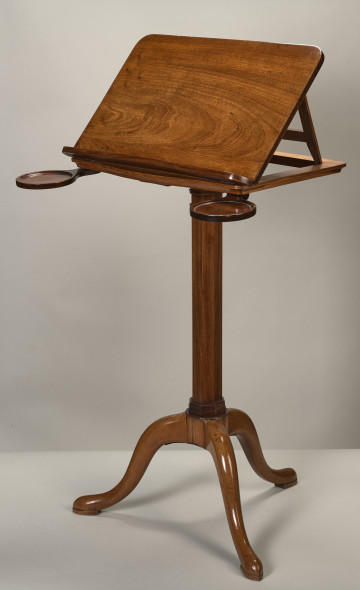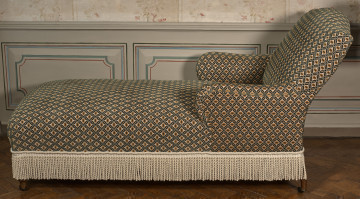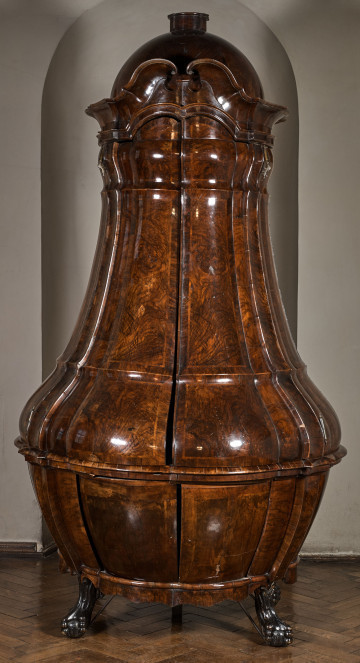
Wooden desktop
18th-19th century
Castle Museum in Łańcut
Part of the collection: Furniture and interior furnishings
The return to historical styles in architecture, interior design, and furniture-making in the 19th century was a kind of re-examination of the past, history, and achievements of European culture. Furnishings from the near and the quite distant past were copied, imitated, interpreted or used as inspiration in furniture-making. Renaissance was one of the reference points. The table described here is an example of such imitations; it was modelled on 15th-century Italian furniture popularised in Europe in the 16th century. For Italians, the ancient prototype of the long table was the Roman stone 'cartibulum'. This is why tables with a top set on decorative front-facing supports were simply known as 'Italian' or 'front-facing'. In the Italian Renaissance, the supports of the tabletop ('sostegni') were decorated with woodcarvings of floral and fantastical-animal ornamentation, volutes, vases, cartouches. Renaissance tables had long and thin but thick tops. Their shape was governed by their purpose. During a feast, people would sit on one side of the table only, leaving the other side free to make serving the diners easier and to provide an unobstructed view of the room. The cartibulum table in Łańcut, evoking the Italian Renaissance ones, was made towards the end of the 19th century. Its carved supports are finished with animal paws. The profiled mouldings imitate the thickness of the tabletop traditional for this piece of furniture. It was not a dining table anymore since the customs relating to feasts changed significantly. The Italian-style cartibulum table was decorative in function, giving the castle interiors an 'ancient' character. Teresa Bagińska-Żurawska https://orcid.org/0000-0002-9243-3967
Author / creator
Dimensions
height: 83 cm, width: 65 cm
Object type
Furniture and interior fittings
Technique
plastic decoration
Material
wood
Creation time / dating
Creation / finding place
Owner
Castle Museum in Łańcut
Identification number
Location / status

18th-19th century
Castle Museum in Łańcut

20th century
Castle Museum in Łańcut

18th century
Castle Museum in Łańcut
DISCOVER this TOPIC
Castle Museum in Łańcut
DISCOVER this PATH
Educational path